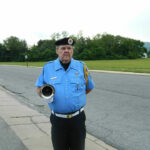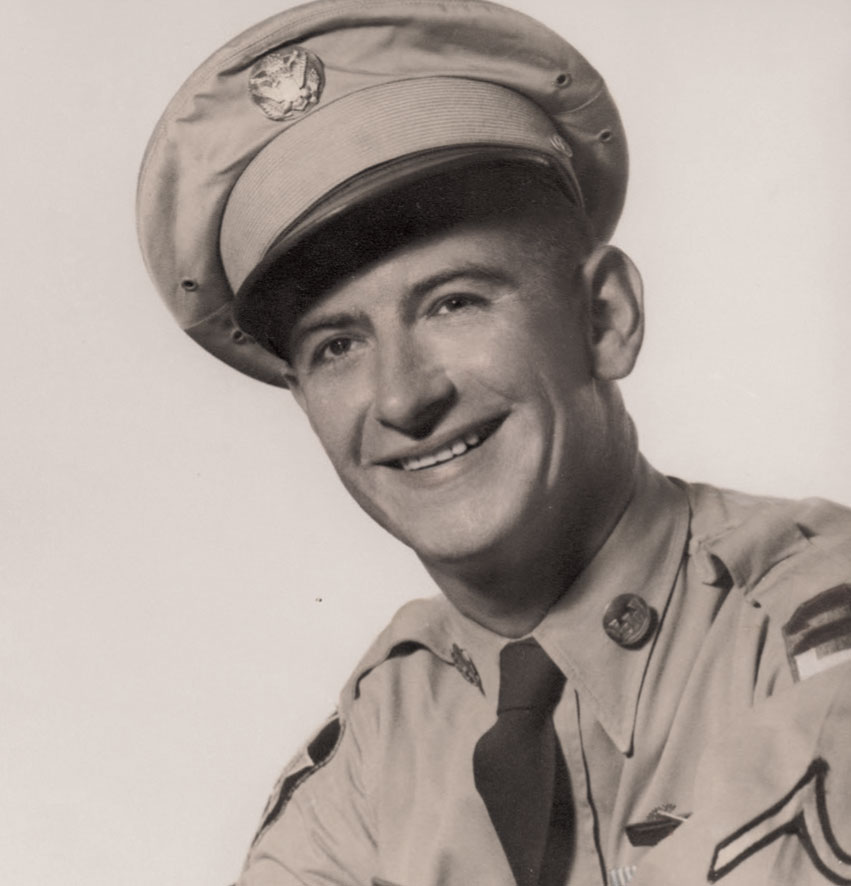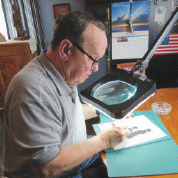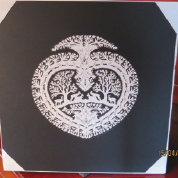Respected CHS Shop Teacher Survived Korea and TB
by Priscilla Rall
Michael Massett immigrated from Italy with only a first grade education. He went to work in the coal mines of West Virginia living in Fairmont where he married Catherine Colorusso. Their first child, Dominick, was born in 1928 just as the Great Depression began its grip on our country. This was a time when the miners were striking for better wages and conditions. They were paid in script which was only good at the company store. Dominick went with his father to many of the strikes. Some of the workers became scabs or “yellow dogs” and helped hired thugs armed with rifles to break up the strikes. There were many accidents in the mines, and the Massett family lost several family members in them. In fact, his uncle was killed in one in the 1960’s. Dominic felt like he was always going to funerals, either for men killed in the mines or for those who died from the effects of the coal dust. Times were tough for the families of the coal miners, and finally Michael was forced to go and ask for “relief.” The government worker there told him, “Go back to Italy and let Mussolini take care of you.” Michael resolved then and there never to ask for any assistance, and the family survived by raising a hog and a large garden. Dominick remembers being called “a hot-headed dago” many times. It was in great part due to the effort of Eleanor Roosevelt that conditions improved in the hills and hollows of West Virginia. Nearby CCC Camps employed many who were struggling to survive. Dominick started work when he was five, delivering newspapers and later at a bowling alley. Every penny he earned he gave to his mother. He also did a lot of hunting and fishing, furnishing the family with carp, suckers, groundhogs, rabbit and squirrel.
Dominick never saw his mother asleep. She was awake when he went to bed and awake when he woke up. First she worked at a restaurant, and then at Westinghouse. Theirs was a typical hardworking immigrant family. When his father finally became an American citizen he told his children, “Now we are Americans. We will no longer speak Italian.”
During WWII, Dominick’s uncle Tony, a medic, was listed as MIA, but he had been captured at the Battle of the Bulge and weighed only 96 lbs. when he was finally freed. Dominick was determined to join the army, but at only 14, this just wasn’t possible.
At his high school graduation, the school charged $10 in fees to be allowed to cross the stage and receive your diploma. A friend learned that he did not have the necessary money and her father paid his fee allowing his proud parents to see their son graduate high school, the first in their family to do so.
After working a few different jobs, Dominick was drafted on December 7, 1950. Just days after finishing boot camp, his father died from a combination of black lung and heart failure. The Red Cross refused his request for a 10-day compassionate leave, finally giving him only three days. Then he shipped out to Japan and then to Korea, landing at Inchon. First he was assigned to a supply unit, trucking supplies north, then he joined a tank company, eventually becoming tank commander. The only training he had on tanks was from a WWII veteran tanker, “Arkie” (he was from Arkansas) who had served under Patton, but that was enough. Dominick named his tank for his sister, Antoinette. His tank company was detached and was sent to wherever they were most needed…Pusan, Taegu, Seoul, Chosen, the Kumwah Valley in the Iron Triangle and others. At one destroyed village, they found a number of small children huddled in an abandoned school house, most probably orphans. The tankers found five nuns to care and teach them, and would periodically send money to help.
Dominick was called “Biggun” due to his size and strength. Once a young lieutenant in a jeep pulled up to Biggun’s tank and ordered that he remove the small American flag flying from his tank’s antenna. He refused, and finally his captain radioed him to find out what was the hold up. When Biggun told him, the captain said, “Shoot the S.O.B. and pull out.”
Massett often saw wounded evacuated by helicopters to MASH units, tied into baskets on the sides of the chopper. Sgt. Wendell Murphy from Mt. Airy took a ride like that.
Finally, Dominick’s tour was up and he was discharged. He began working for the railroad. But one day, things went terribly wrong. Without any warning, he began bleeding profusely from his mouth and nose. He was eventually diagnosed as having TB, which should have shown up in the x-ray taken before his discharge. He spent two years in VA hospitals, going from 226 lbs. to 167 lbs. Rated as 100 percent disabled, he decided to continue his education, first at Fairmont College and then at WVA University with the goal of helping others in rehabilitation and PT. During this time, he married Janet, and in 1958, he landed a job teaching industrial arts at Thurmont High School. During his time at THS and then Catoctin HS, he worked with Ned Kerns (also a Korean vet), Bill Baker and Carlos Engler (both WWII vets). Dominick built the family a home in Thurmont on Radio Lane and the family increased with five children; Sabrina, Elisa, Myra, Robert and Matthew. Janet worked as a nurse for Dr. Morningstar in Emmitsburg.
Dominick now has seven grandchildren and two great-grandchildren and rarely follows his doctor’s advice to take it easy. After a long life of service to his country and community, he has certainly earned the right to do as he pleases. We in Frederick County, salute you and honor you as a true hometown hero.
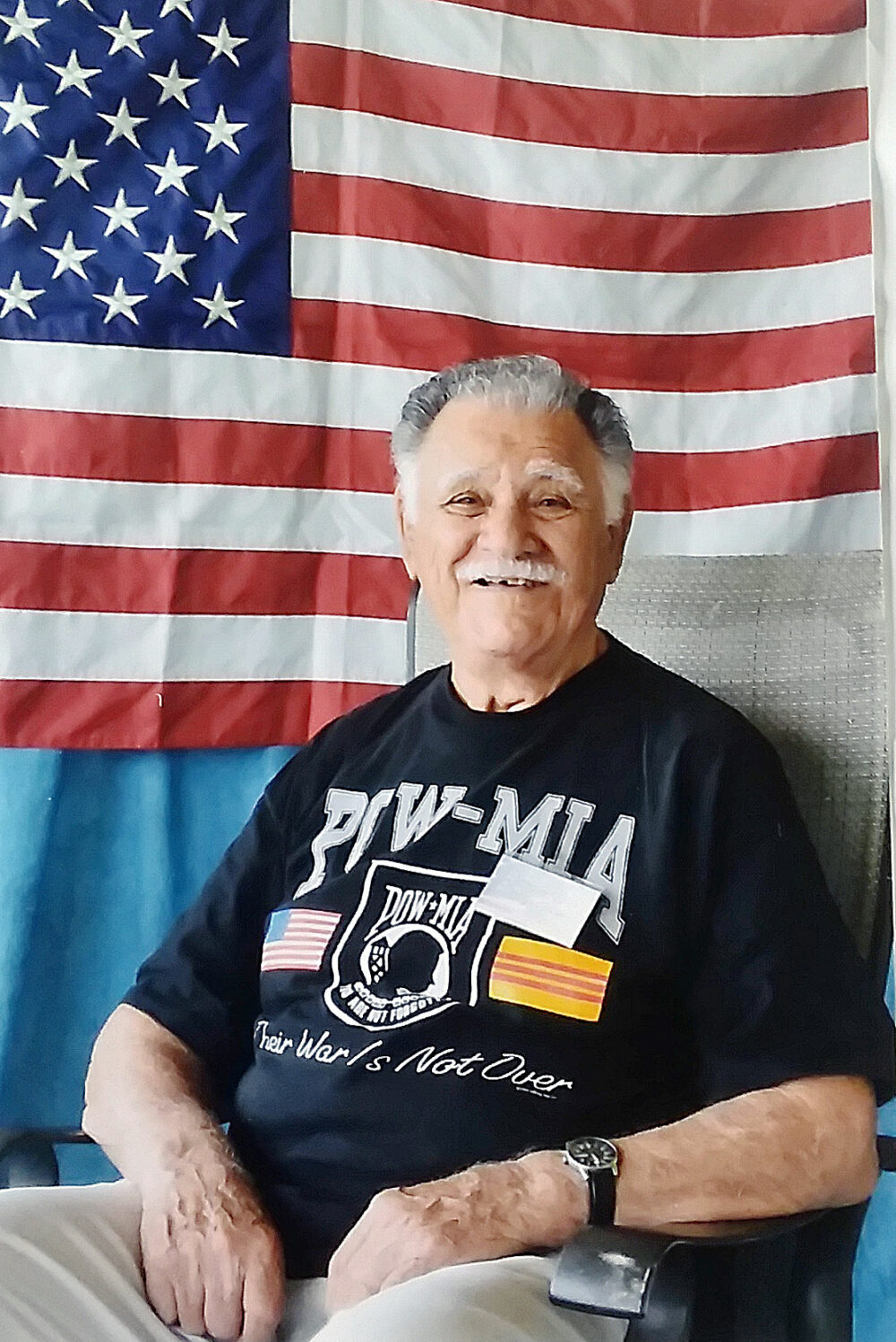
Courtesy Photo of Michael Massett

